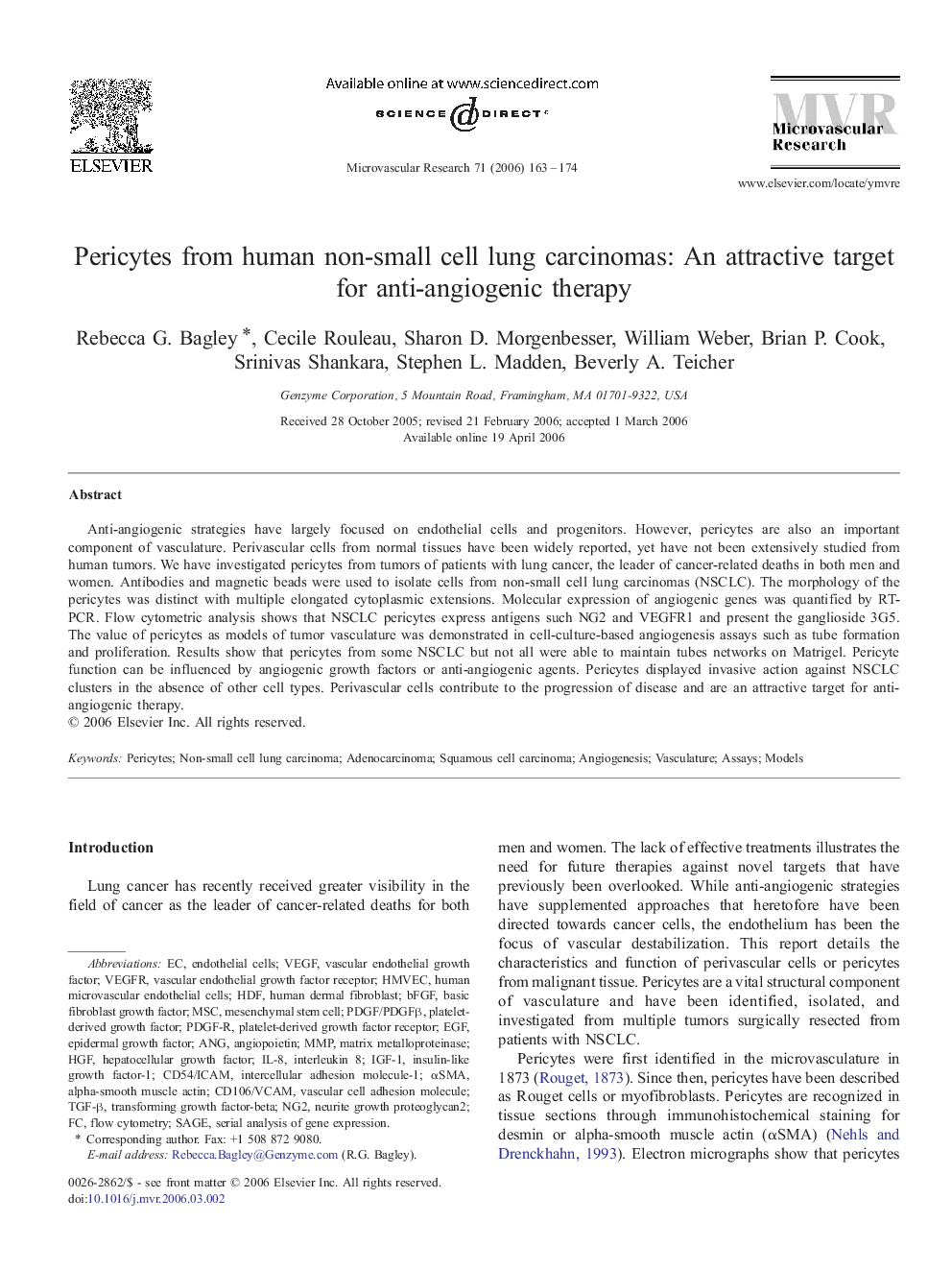| Article ID | Journal | Published Year | Pages | File Type |
|---|---|---|---|---|
| 1995433 | Microvascular Research | 2006 | 12 Pages |
Anti-angiogenic strategies have largely focused on endothelial cells and progenitors. However, pericytes are also an important component of vasculature. Perivascular cells from normal tissues have been widely reported, yet have not been extensively studied from human tumors. We have investigated pericytes from tumors of patients with lung cancer, the leader of cancer-related deaths in both men and women. Antibodies and magnetic beads were used to isolate cells from non-small cell lung carcinomas (NSCLC). The morphology of the pericytes was distinct with multiple elongated cytoplasmic extensions. Molecular expression of angiogenic genes was quantified by RT-PCR. Flow cytometric analysis shows that NSCLC pericytes express antigens such NG2 and VEGFR1 and present the ganglioside 3G5. The value of pericytes as models of tumor vasculature was demonstrated in cell-culture-based angiogenesis assays such as tube formation and proliferation. Results show that pericytes from some NSCLC but not all were able to maintain tubes networks on Matrigel. Pericyte function can be influenced by angiogenic growth factors or anti-angiogenic agents. Pericytes displayed invasive action against NSCLC clusters in the absence of other cell types. Perivascular cells contribute to the progression of disease and are an attractive target for anti-angiogenic therapy.
